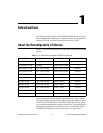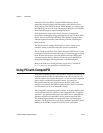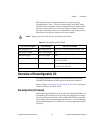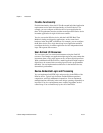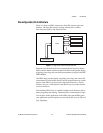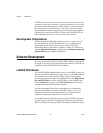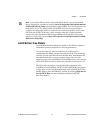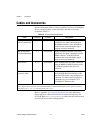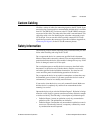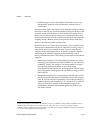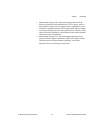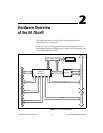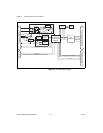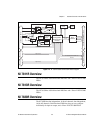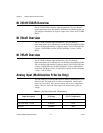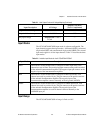
Chapter 1 Introduction
© National Instruments Corporation 1-9 R Series Intelligent DAQ User Manual
Custom Cabling
NI offers a variety of cables for connecting signals to the NI 78xxR. If you
need to develop a custom cable, a nonterminated shielded cable is available
from NI. The SHC68-NT-S connects to the NI 78xxR VHDCI connectors
on one end of the cable. The other end of the cable is not terminated. This
cable ships with a wire list identifying the wires that correspond to each
NI 78xxR pin. You can use this cable to quickly connect the NI 78xxR
signals that you need to the connector of your choice. Refer to Appendix A,
Connecting I/O Signals, for the NI 78xxR connector pinouts.
Safety Information
The following section contains important safety information that you must
follow when installing and using the NI 78xxR.
Do not operate the device in a manner not specified in this document.
Misuse of the module can result in a hazard. You can compromise the safety
protection built into the device if the module is damaged in any way. If the
device is damaged, return it to NI for repair.
Do not substitute parts or modify the device except as described in this
document. Use the device only with the chassis, modules, accessories,
and cables specified in the installation instructions. You must have all
covers and filler panels installed during operation of the device.
Do not operate the device in an explosive atmosphere or where there may
be flammable gases or fumes. If you must operate the device in such an
environment, it must be in a suitably rated enclosure.
If you need to clean the device, use a soft, nonmetallic brush. Make sure
that the device is completely dry and free from contaminants before
returning it to service.
Operate the device only at or below Pollution Degree 2. Pollution is foreign
matter in a solid, liquid, or gaseous state that can reduce dielectric strength
or surface resistivity. The following is a description of pollution degrees:
• Pollution Degree 1 means no pollution or only dry, nonconductive
pollution occurs. The pollution has no influence.
• Pollution Degree 2 means that only nonconductive pollution occurs in
most cases. Occasionally, however, a temporary conductivity caused
by condensation must be expected.



